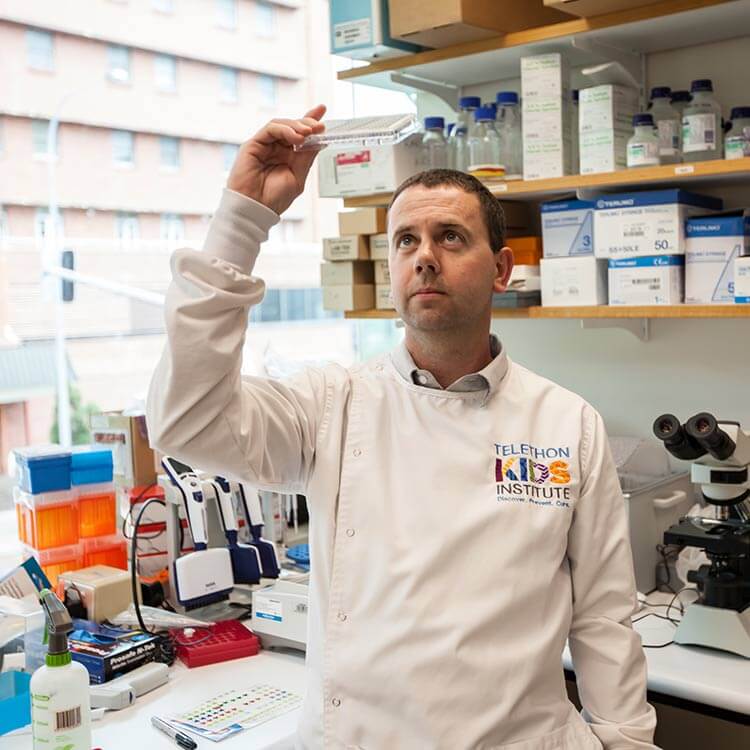Search

News & Events
How to win friends and influence people: Cancer researchers talk the talk for big resultsIn the field of cancer research, lobbying efforts by the The Kids Cancer Centre have contributed to major initiatives including Australia’s first personalised medicine program for children with high-risk cancer, and a mission to boost survival rates in brain cancer patients.

News & Events
Funding boost to melanoma researchA The Kids Research Institute Australia researcher will investigate new ways to harness the body’s own immune system to fight melanoma, thanks to Cancer Council WA funding.
News & Events
Adventurers deliver on a promise to help kids with cancerA state of the art 3D molecular imager that will help researchers monitor how brain tumours grow has been delivered to the Telethon Institute.
Research
Pre-natal, clonal origin of t(1;11)(p32;q23) acute lymphoblastic leukemia in monozygotic twinsInvestigation of this rare mixed lineage leukemia cytogenetic abnormality aims to provide further evidence of the genetic changes that underpin this leukemia.
Research
Parental prenatal smoking and risk of childhood Acute Lymphoblastic LeukemiaThe association between parental smoking and risk of childhood acute lymphoblastic leukemia (ALL) was investigated in an Australian population-based...
Research
Interactions between acute lymphoblastic leukemia and bone marrow stromal cells influence response to therapyThe cure rate for pediatric patients with B precursor acute lymphoblastic leukemia (pre-B ALL) is steadily improving, however relapses do occur despite...
Research
Western Australian children with acute lymphoblastic leukemia are taller at diagnosis than unaffected children of the same age and sexAcute lymphoblastic leukemia (ALL) is the commonest childhood malignancy in Australian children
Research
Risk of childhood acute lymphoblastic leukaemia following parental occupational exposure to extremely low frequency electromagnetic fieldsRisk of childhood acute lymphoblastic leukaemia following parental occupational exposure to extremely low frequency electromagnetic fields British Journal..
Research
CD8α+ DCs are not the sole subset cross-presenting cell associated tumor antigens from a solid tumorCD8α+ DCs are not the sole subset cross-presenting cell associated tumor antigens from a solid tumor
Research
Boosting the influenza vaccine schedule in children with cancer: a prospective open-label studyCurrent immunization guidelines recommend one dose of influenza vaccine for children aged ≥9 years and two doses for younger or vaccine-naïve children. However, children receiving chemotherapy have an attenuated immune response. We performed a prospective open-label study in children undergoing treatment for cancer at Perth Children's Hospital, Western Australia, to examine the safety and efficacy of a boosted influenza schedule.
